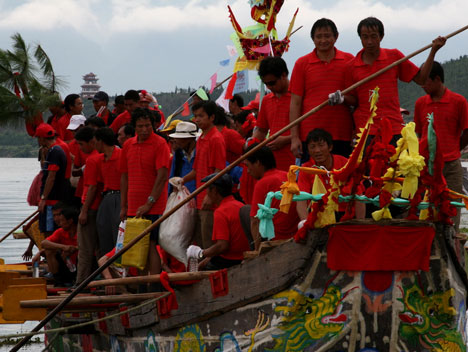
The Nama are about 50,000 or 60,000 people that live in two western districts of Yunnan Province: Lanping and Weixi.
750 years ago, when the Mongolian troops commanded by Kublai Khan conquered the Dali Kingdom, many of their inhabitants escaped from the oppression and of the war. Among them there was a group that went toward the west, toward the sharp canyons of the Mekong river basin (called Lancang in China) along whose banks they settled down. They were the ancestors of the Nama, and also of the Leimo.
The Nama are still living nowadays in this same area:
In Lanping County, in Yinpang, Shideng, Zhongbai, Hexi, Mien'e Townships.
In Weixi County, they are in the area bordering with Lanping, Weideng zone.
There are also some Nama that live in mountainous areas of Yunlong County.
Most of them call themselves Nama, a name that, nevertheless, it could be an adoption of the way the Lisu and the Naxi denominated them. Because in the language of these peoples "Nama" means "tiger", that is the protective animal of the Nama. They consider they descend from the tiger and they worship the mother tigress as their ancestor. With that name they have been known in some documents of the Qing dynasty.
Among them there are some that are denominated Bani, name that according to their legends, the goddess Guanyin granted to them once she went to visit them in time of calamities, and that it would mean literally "clawing the mud", what remembers in an direct way the difficulties that they passed to survive.
About 300 years ago some clans of the Namas emigrated crossing the mountains to the basin of the Nujiang river (called Salween out of China). The Lisu and the Nusu who lived there denominated them, Leimo "arrived across the mountains" (with that name they have been known in some documents of the Qing dynasty) and Miaowang "those who use oxen to cultivate", being recognized officially by that first name.
Now, both the Nama and the Leimo are considered two different branches of the Bai minority, based in their common origin. At the end of the 18th century, the discovery of salt mines in the lands of the Nama, provoked a new migratory wave of Bai people coming from Dali, who brought with them, besides instruments and more advanced tools, the religion of the Benzhu "lords of the land".
After seven centuries of separation, the culture of the Nama is totally different from that of the Bai, as are theirs languages. However, as Luo Shibao (1), who has researched extensively their culture, affirms, the Nama and the Leimo still maintain today important cultural similarities.
We Recommend:
